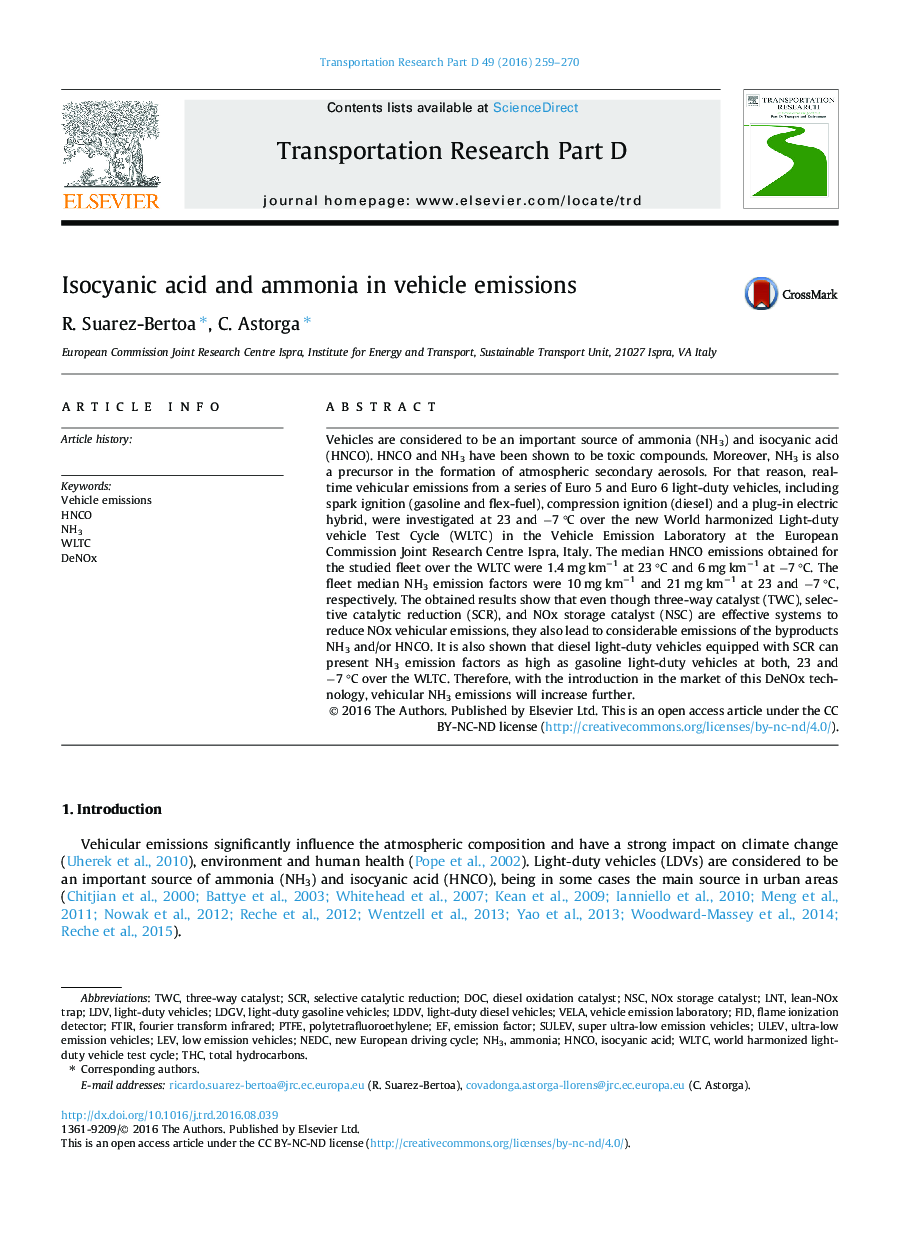| کد مقاله | کد نشریه | سال انتشار | مقاله انگلیسی | نسخه تمام متن |
|---|---|---|---|---|
| 7499428 | 1485874 | 2016 | 12 صفحه PDF | دانلود رایگان |
عنوان انگلیسی مقاله ISI
Isocyanic acid and ammonia in vehicle emissions
ترجمه فارسی عنوان
اسید ایزوسیانیک و آمونیاک در انتشار خودرو
دانلود مقاله + سفارش ترجمه
دانلود مقاله ISI انگلیسی
رایگان برای ایرانیان
کلمات کلیدی
PTFEWLTCTWCdeNOxNSCNH3LEVLDVLNTNEDCDOCHNCOTHCflame ionization detector - آشکارساز یونیزاسیون شعلهAmmonia - آمونیاکIsocyanic acid - اسید ایزوسیانیکVehicle emissions - انتشار خودروFourier transform infrared - تبدیل فوریه مادون قرمزFID - درThree-way catalyst - سه کاتالیزورFTIR - طیف سنج مادون قرمزEmission factor - فاکتور انتشارLight-duty vehicles - وسایل نقلیه سبکpolytetrafluoroethylene - پلی تترافلورو اتیلنnew European driving cycle - چرخه ی جدید اروپاییdiesel oxidation catalyst - کاتالیزور اکسیداسیون دیزلNOx storage catalyst - کاتالیزور ذخیره سازی NOxSelective catalytic reduction - کاهش کاتالیزوری انتخابی یا کاهش کاتالیستی انتخابیVelA - کشتیرانیTotal hydrocarbons - کل هیدروکربن هاSCR - یکسوساز کنترلشده با سیلیکون
موضوعات مرتبط
علوم زیستی و بیوفناوری
علوم محیط زیست
علوم زیست محیطی (عمومی)
چکیده انگلیسی
Vehicles are considered to be an important source of ammonia (NH3) and isocyanic acid (HNCO). HNCO and NH3 have been shown to be toxic compounds. Moreover, NH3 is also a precursor in the formation of atmospheric secondary aerosols. For that reason, real-time vehicular emissions from a series of Euro 5 and Euro 6 light-duty vehicles, including spark ignition (gasoline and flex-fuel), compression ignition (diesel) and a plug-in electric hybrid, were investigated at 23 and â7 °C over the new World harmonized Light-duty vehicle Test Cycle (WLTC) in the Vehicle Emission Laboratory at the European Commission Joint Research Centre Ispra, Italy. The median HNCO emissions obtained for the studied fleet over the WLTC were 1.4 mg kmâ1 at 23 °C and 6 mg kmâ1 at â7 °C. The fleet median NH3 emission factors were 10 mg kmâ1 and 21 mg kmâ1 at 23 and â7 °C, respectively. The obtained results show that even though three-way catalyst (TWC), selective catalytic reduction (SCR), and NOx storage catalyst (NSC) are effective systems to reduce NOx vehicular emissions, they also lead to considerable emissions of the byproducts NH3 and/or HNCO. It is also shown that diesel light-duty vehicles equipped with SCR can present NH3 emission factors as high as gasoline light-duty vehicles at both, 23 and â7 °C over the WLTC. Therefore, with the introduction in the market of this DeNOx technology, vehicular NH3 emissions will increase further.
ناشر
Database: Elsevier - ScienceDirect (ساینس دایرکت)
Journal: Transportation Research Part D: Transport and Environment - Volume 49, December 2016, Pages 259-270
Journal: Transportation Research Part D: Transport and Environment - Volume 49, December 2016, Pages 259-270
نویسندگان
R. Suarez-Bertoa, C. Astorga,
